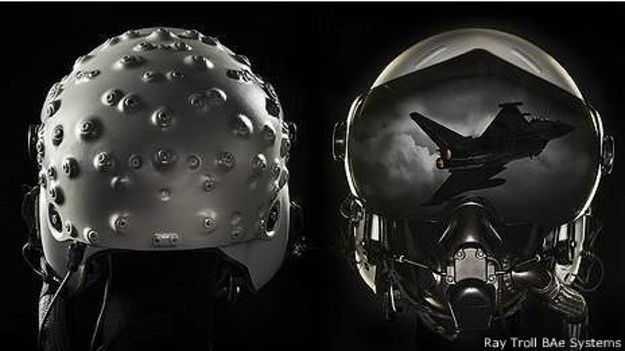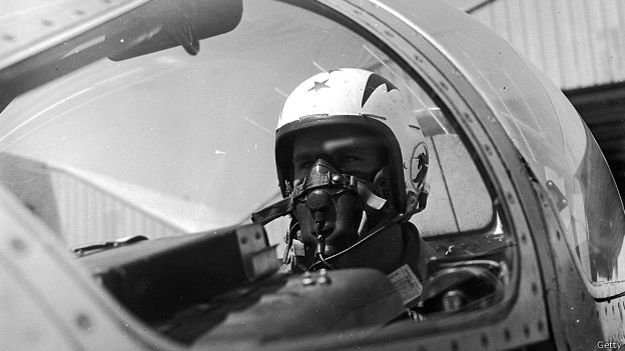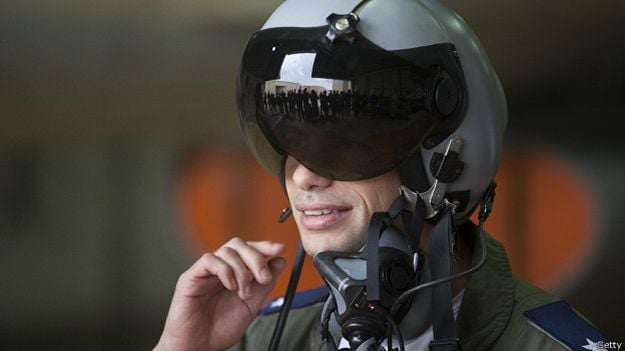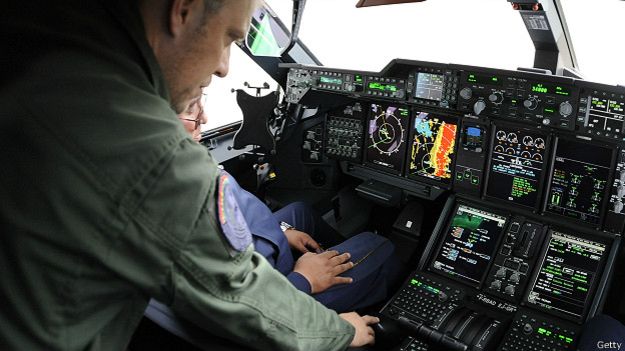Place a modern fighter pilot – one of the mysteries that are interested in a good half of ordinary citizens, BBC Future managed to go there look and tell what changes will the workplace as a fighter pilot in the XXI century.
The cabin is modern fighter is one of the most impressive technological advances in the world. Work on its design begins decades before entering the aircraft to service.
If you think that your office could use a renovation, but still it would be nice to buy new furniture, think about pilots who piloted jet combat vehicles such as the American F-16 or the Anglo-German Tornado. Their cabin aircraft have changed little since the time of the development in the 1970s.
To create a new fighter takes a long time. The F-22 Raptor, developed by US company Lockheed Martin, today – only in service supersonic fighter created using stealth technology “stealth”. In 1986, when the US Air Force awarded the prototype F-22 victory in the competition to design the fifth-generation fighter, at the latest at the time the computer model Apple – Macintosh Plus – was only 1MB of RAM and the hard drive was not provided at all. F-22 performed its first combat mission Sept. 22, 2014 – three days after Apple began selling smartphone iPhone 6. Over the past between these two events 28 years technology has progressed, but nothing out of date as soon as forecasts yesterday.
The current Aircraft can only guess what the world after 40 years. Even geniuses of Silicon Valley is not always a virtue to predict the future. “As part of my work I try to predict the course of technological progress, at least until 2040,” – says Mark Bowman, chief test pilot of the British company BAE Systems, based in the UK Wharton.

Как same aircraft designers still have to deal with these problems in the development of new fighters? And what technologies they plan to introduce in the cockpit of the future?
In the newest jet military planes – such as Eurofighter Typhoon, in the arsenal, including RAF and American unobtrusive fighter F-35 Joint Strike Fighter production of Lockheed Martin, who has yet to go into service – you can find a helmet-mounted target designator system voice recognition, as well as the modified aircraft controls similar to those used on modern airliners. Even visual equipment cabs current fighter is significantly different from the kaleidoscope of dials and buttons, familiar to pilots of previous generations.
But these innovations – not an end in itself. The reason for the changes in the layout of the flight cabin lies in the fact that over the past 20-30 years have changed and functions as a fighter pilot.
“Thanks to advances in aerodynamics, as well as the constant growth of automation functions piloting now go to the second plan – says Bowman, whose task is to help with the ongoing modernization of the fighter Typhoon. – The pilot is increasingly concentrated on the goals and objectives of sorties, it remains for decision-making function. We consider the existing technologies and figure out how they can help the pilot to perform combat task “.
Multitasking
modern combat pilots – and in the current fighters usually crew consists of one person – sometimes it is necessary to simultaneously monitor the unidentified flying plane, watch the battle ground in real time with video cameras and maintain radio communications with the command on the ground. In this situation, simply do not have time for you to constantly distracted by the devices, trying to figure out whether the plane is flying in the right direction and how much is left of fuel on board.
“Our goal is to focus the pilot not on the dashboard, and the situation behind, because it was there – outside the cabin – and are fighting goals – says Bowman. – That’s why we strive to focus as much as possible the necessary information before his eyes “.

Then helmet was primarily a protective function
Although Typhoon first flew 20 years ago, its designers conceive a step ahead of his time. In the cockpit did not find any of the navigation device or the status light board systems from among those used in the earlier types of fighters. The information is displayed in three color display on the dashboard and on the display on the windshield (HUD, the English term – heads-up display, HUD) – a transparent panel installed on the dashboard at the eye level of the pilot, which projected and symbols. HUD is working so that the eye focuses on the information displayed when the pilot directs look through the windshield out.
From helmet to the sensor
In the stationary HUD There is one flaw to read information projected on him, the pilot must constantly look straight ahead. Logical development of this technology was embedding the indicator in visor on the headset pilot. This functionality has a headset for a fighter Typhoon, designed and manufactured by BAE factory in Rochester, Kent. Each instance headset fit the shape of the head of the pilot, for which it is intended. Cameras scattered around the cabin, monitoring the situation of tens of diodes dotting the outer surface of the headset, and onboard computers constantly adjust the display information projected on the visor, depending on which way the currently looking flyer.

Helm of the Israeli pilots F16 brings features that pilots of the 1950s and never dreamed of
“From a protective helmet and a radio communication system, we have turned the headset into the sensor – says Bowman. – Now the headset is fully intergirovan the information system cabin.” Lockheed went even further – to the F-35 HUD stationary at all. On the visor headset displays all the information that other fighters projected onto the windshield. In addition, the visor serves as a screen for video cameras located on the outer surface of the aircraft. This allows the pilot to look “through the fuselage,” and even watch the overflown terrain through the cabin floor.
He goes back in time and handle control of the aircraft (RUS), which was located on the fighter of the decade between the legs of the pilot – now instead of it all more commonly used lateral control knob (side-stick), that is, under the right hand joystick. Mechanical linkage from the handle to the handlebars direction and height, as well as ailerons, no more. Thereby facilitating the design of the aircraft, but disappears force on the handle, that is an inverse relationship between the pilot and the plane. To compensate for this, the control knob is applied depending on the vibration behavior deflected plane in response to the pilot.
In the cockpits of fighter aircraft of the future, most likely, all of these innovations will be further developed.
Modern aircraft engineer constantly monitor technological progress not only in their field. They are ready to consider any new technology with the potential to increase the awareness of the pilot of the current flight situation and at the same time allowing him to concentrate fully on a combat mission.
virtual cockpit
“Among the possible advanced technologies – tracking the direction of gaze and gestures pilot neurohelmet system and augmented reality (augmented reality), – says Bowman. – If you dream, you can imagine what the pilots subsequent generations will share a booth with something like avatars helping them to make decisions “.

Cabs many aircraft to still differ conglomeration of instruments and poor ergonomics information space
Aircraft Typhoon and F-35 gives probably the best idea of what will look like the cockpit of fighter of the future. However, there is another interesting area of technology development. “Cab” American unmanned aerial vehicle (UAV) Reaper may be thousands of kilometers away: the crew, consisting of pilot and operator of onboard sensors, sitting on ground control. In the future, this “remote cockpit” would not necessarily be on the ground – it can be placed on board the destroyer. The pilot will be at the same time manage their aircraft, as well as multiple unmanned vehicles. And not necessarily only in order to achieve numerical superiority over the enemy.
“The Fighter Typhoon is designed to overload the allowable range from +9 g to -3 g (where g, simplistic – the force of gravity on the Earth’s surface – Ed.) and the excess of these indicators is not desirable for the crew, “- says Bowman. High positive overload during heavy maneuvering aircraft pilot cause the effect of “black veil” in front of the eyes (blackout), caused by injection of blood from the head. In the case of high negative overload blood, on the contrary, rushes to the head, causing the “red veil” (redout). In both cases, the pilot “fail” before the collapse of the congestion experienced by the construction of modern aircraft. “But drones are not limited in their maneuverability human factor” – adds Bowman. Thus, the sixth-generation fighter may well be unmanned.
-> ->-> – ->
No comments:
Post a Comment